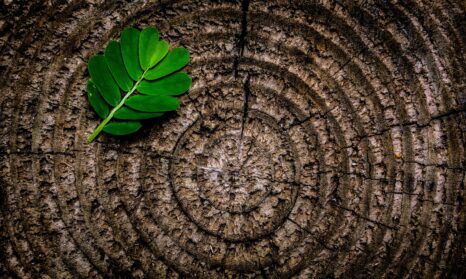Five circular economy FAQs
The circular economy is an exciting opportunity for businesses but all the talk can be confusing. Simply put it is an alternative to the traditional linear economy where we take resources, make products and then dispose of them - which isn’t good for the planet or our pockets!
A circular economy, on the other hand, seeks to keep resources in use for as long as possible, extracting the maximum value while they are in use and recovering and regenerating materials once they can no longer be used. (WRAP)
But like all terms, it can end up being a ‘catch-all’, leading to misperception and even scepticism which can hamper uptake despite its proven benefits for businesses across sectors. Our work with partners on the circular economy has revealed some of the most frequently asked questions. Here are the answers!
Is the circular economy just another sustainability fad?
Unlikely. In December 2015 the European Commission launched its Circular Economy package, which aims to stimulate Europe’s transition towards the circular economy. This provides a policy framework of targets and financial investment, providing clear signals to 2020 and beyond. Despite the uncertainty of Brexit, companies that still wish to operate in Europe or sell products there will need to comply.
At a city level, places such as London, Peterborough and Glasgow have set out visions and road maps for the circular economy, ready to embrace the opportunities.
The business community is also getting increasingly excited by the circular economy; it is now a firm item on the agenda of the World Economic Forum annual conference. Philips, Desso carpets, Mud jeans, and Arup are just a few of the companies demonstrating what is possible.
Given the environmental and resource challenges of the future, it is increasingly considered a genuine alternative to the current economic model.
Isn't this just waste management rebranded?
No. It is about looking at a system as a whole and seeing how it is all connected. Waste management focuses on the final stage of a product, whereas the circular economy looks across the lifecycle and crucially includes design. It is about redesigning systems to be more efficient and effective, so that ultimately there is no ‘waste’.
It is about looking at a system as a whole and seeing how it is all connected. Waste management focuses on the final stage of a product, whereas the circular economy looks across the lifecycle and crucially includes design. It is about redesigning systems to be more efficient and effective, so that ultimately there is no ‘waste’.
Do the materials have to be made back into the same product?
Definitely not. While re-making something back into the same product is one element, the circular economy is much broader and has a number of different levels. A key objective is to ensure materials remain circulating in the economy. Those materials might be reused, remanufactured or recycled by your own business, but they could be sold on to a different company for a totally different use.
If we don't encourage customers to keep buying things, won't our profits fall?
Current business models don’t take durability and longevity into account. This can be frustrating for customers and damage reputation if goods are seen to be poor quality. Companies such as Patagonia see this new narrative as a significant customer engagement opportunity. Service packages that include repair, maintenance, and upgrades, can actually drive customer footfall and loyalty through increased contact points and a maintained relationship.
Furthermore, schemes such as leasing mean that you retain ownership of the assets. Once customers are finished with the product, you can recuperate the value of the material (which you already invested in) by reusing it or selling it on.
We can't tackle everything at once - shouldn't climate change be our priority?
The circular economy and climate change mitigation go hand-in-hand. Some of the greatest contributors to global greenhouse gas emissions include construction, manufacturing and agriculture. The circular economy aims to find commercially viable ways of doing these while significantly reducing the energy needed to produce. Crucially, as demonstrated by Caterpillar’s Cat Reman business arm, it shouldn’t be seen as an extra burden, but rather as a tool to do business better.
Learn more about how we're helping our partners transition towards a circular economy.
The circular economy: cracking the challenge
The circular economy is one of the biggest challenges - yet most exciting opportunities - for today's businesses. This guide will help your business get started, and explain the benefits of embracing the circular economy
Download PDF







